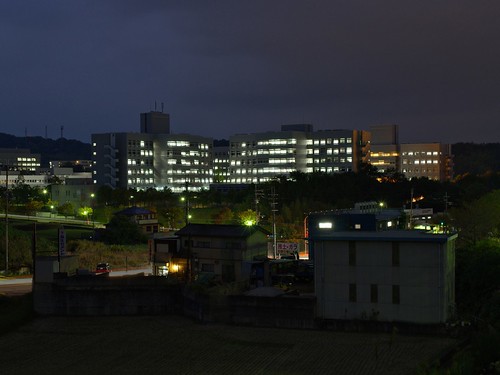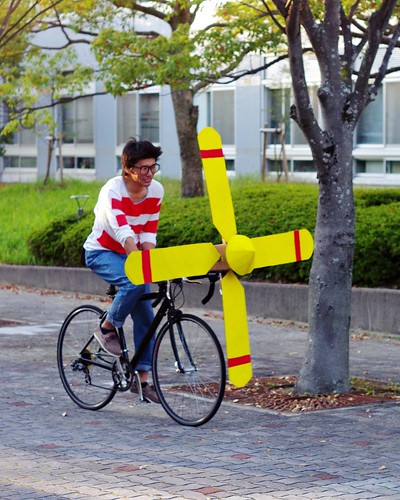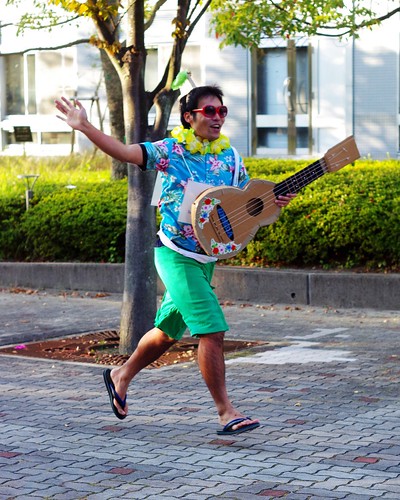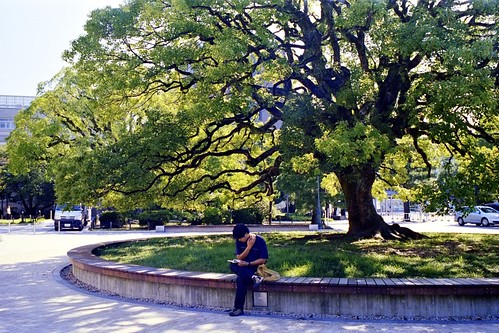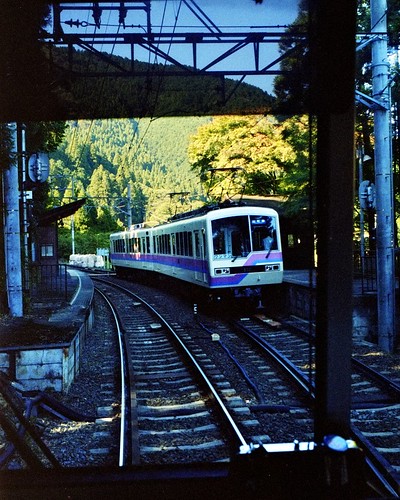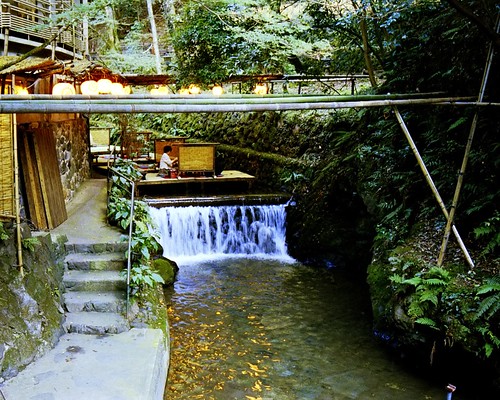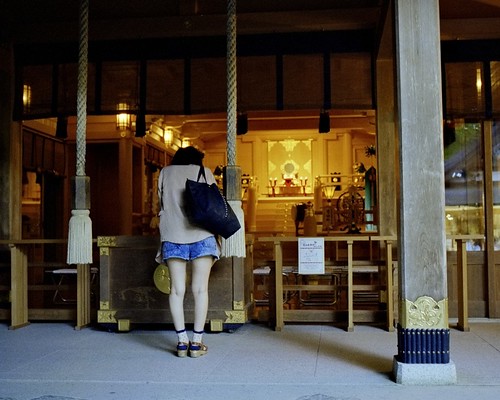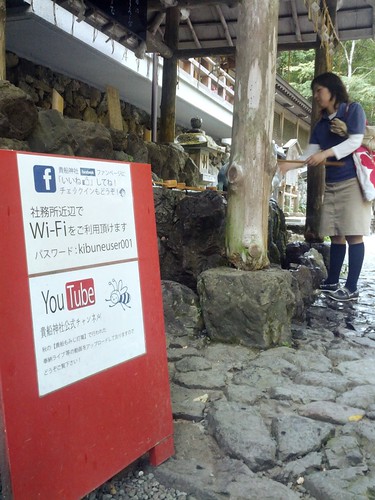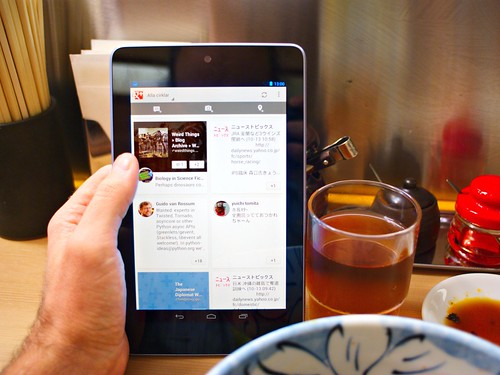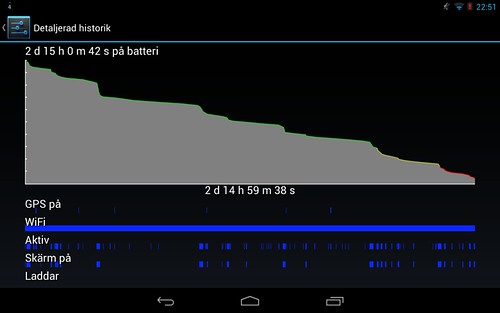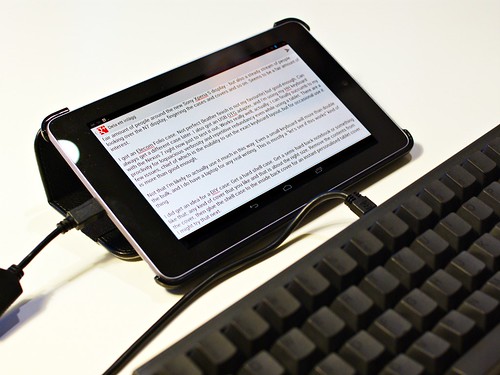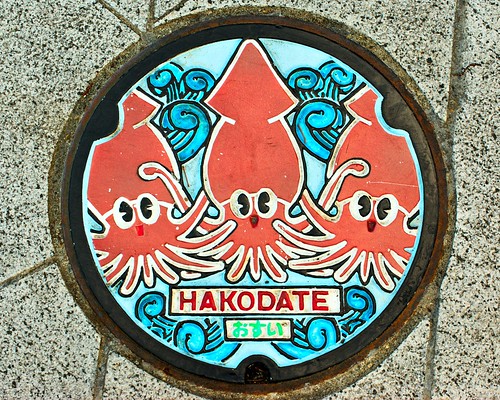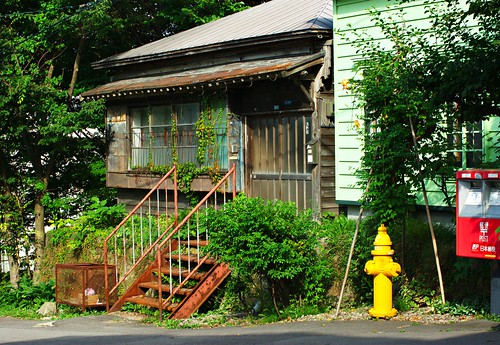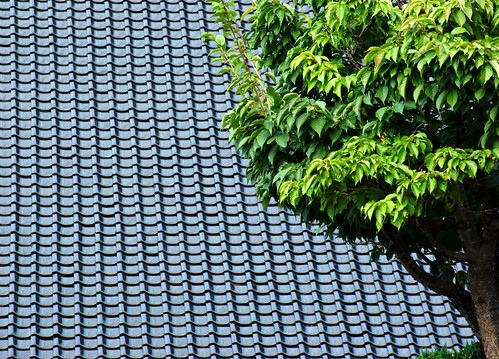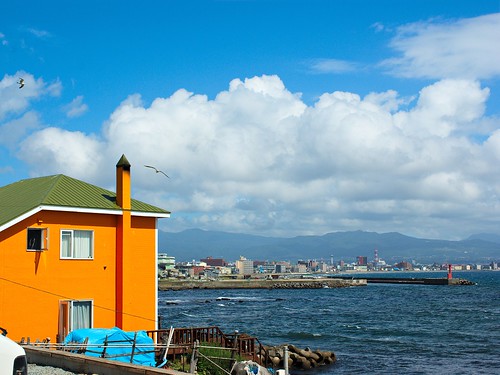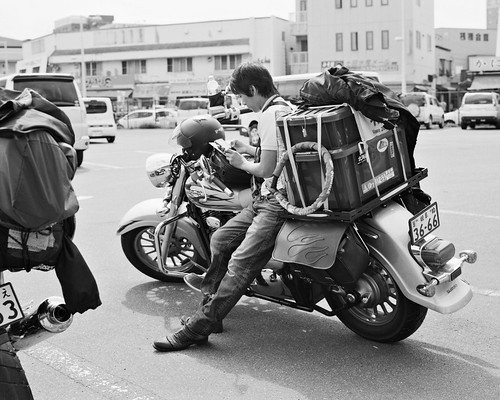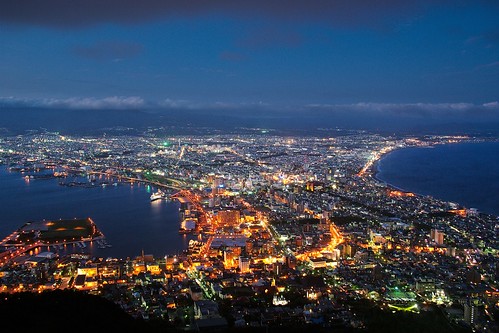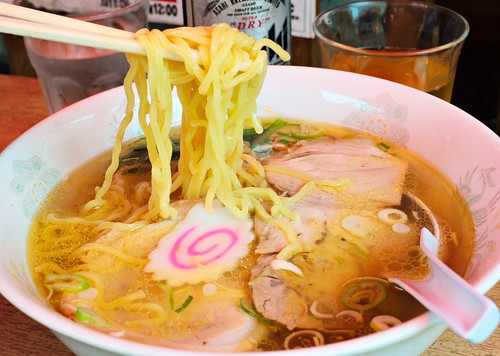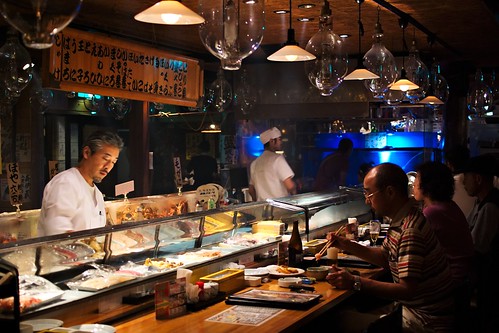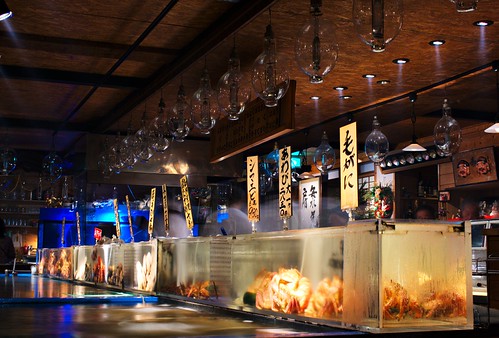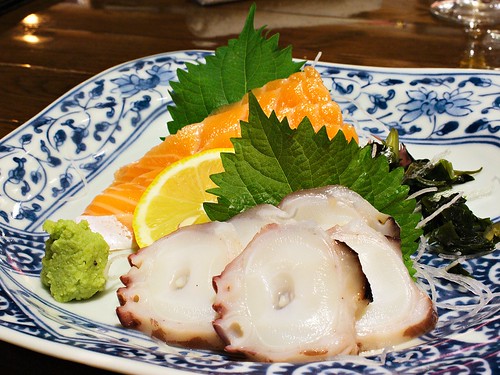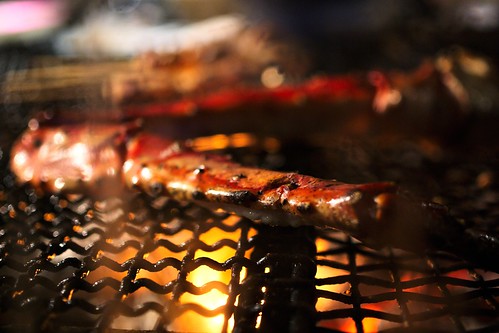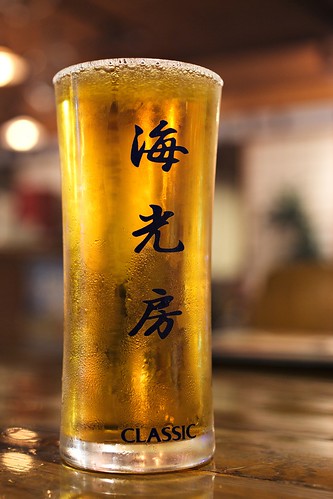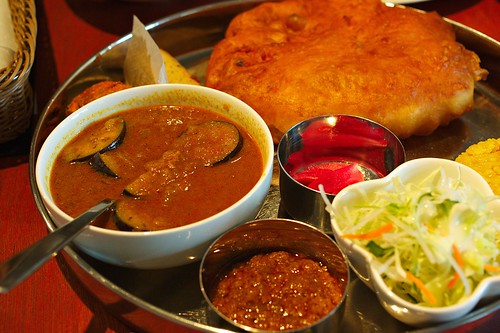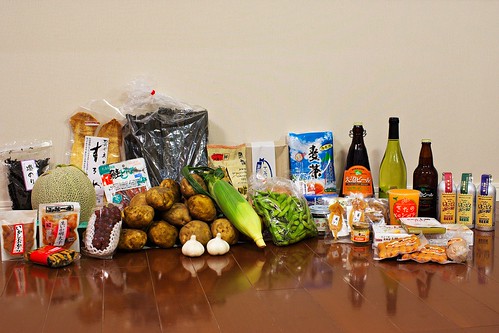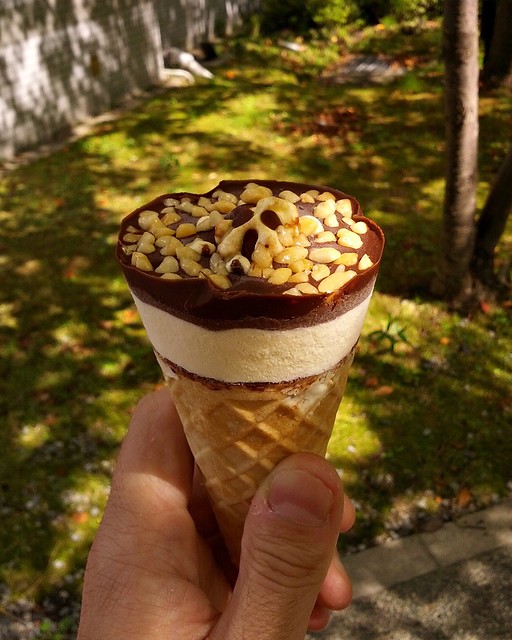Wednesday, October 31, 2012
A New Beginning
Almost four years ago I joined a project at Kyoto university. The idea was to develop a system-scale, detailed model of an area in the brainstem called the superior colliculus, that is responsible for doing saccades — that's the quick jumps from spot to spot your eyes always do when you examine something, read (like now) or just generally look around. The model is fairly large and detailed, so we've used large clusters and supercomputers to actually run it.
The overall project has involved quite a few people and a number of labs. My affiliation was Ishii-lab at Kyoto University while I've been working for professor Doya of OIST in Okinawa. My office has been at NAIST in Nara where I worked with Dr. Shibata, and I've occasionally worked at ATR in Keihanna with Dr. Sugimoto. We've been cooperating with Dr. Inagaki at Riken in Wako outside Tokyo and with Dr. Djurfeldt at INCF and KTH in Stockholm, Sweden. We've been using the RICC cluster at Riken and the Kei supercomputer in Kobe. I have never felt so distributed in my life.
All good things must come to an end. We still have a public presentation and we need to shepherd our model paper through the labyrinthine publication process, but overall the project is now over. It's time to move on.
As of tomorrow November 1st my new affiliation will be Okinawa Institute of Science and Technology in Okinawa, where I will join the Neural Computation unit led by prof. Doya. Moving from Kyoto to Okinawa may sound like a rather drastic change; the practical consequences aren't all that large.
I've been working for prof. Doya for the past few years already, so formally joining his group is not a big change. And while my affiliation changes from Kyoto to Okinawa, my actual place of work just moves from NAIST in Nara to AICS (Advanced institute for Computing Sciences) in Kobe — the site of the Kei supercomputer that we've been using. We'll stay in Osaka, and my commute will be just as long as before — an hour and twenty minutes — but westward to Kobe rather than eastward towards Nara.
The modeling project I'm joining deals with the basal ganglia. It's larger in scope than the previous one and more directly connected to practical applications. With me at AICS we get closer access to developers and administrators. This should help speed up the development and deployment of our models.
This will mean more trips to Okinawa, and indeed I'm there for a project meeting right now. Okinawa sounds far but it's really not bad; with a two-hour flight to Okinawa and one hour from Naha to Onna, the travel time from Osaka to OIST is comparable to visiting Riken in Wako, northern Tokyo. It's almost a day trip, but you really need to stay the night before to get a full day of work.
The past few years at NAIST have been a lot of fun, and especially working at a university again and having graduate students around. I will miss that at AICS. But the new project is exciting and I have high hopes that we can take what we've learned about large-scale modeling from the previous project to make the new one even better.
Monday, October 29, 2012
Ekiden
Ekiden is a popular long-distance cross-country relay footrace competition in Japan. There's no fixed format; a race may have teams from 5 to 10 people, and the running distance per runner may vary from a kilometer to a half marathon. Most races are school-related events, with teams from different high schools or universities1.
Some large ekiden events are highly competitive, very serious and even broadcast on TV. Others are less so, and the departmental ekiden held at NAIST each autumn is decidedly in the latter category. Some teams take the race somewhat seriously and train beforehand. Other teams simply take it as an excuse to dress up, get out of the lab and have fun in the autumn sunshine for an afternoon.
One of the two Mathematical Informatics teams, with a Hayao Miyazaki theme. And yes, 'Miyazaki' to the left ran the course holding that bug thing over his head. Our other team did take it seriously, and won the race.
Another team went for a coordinated look. This is, I believe, the villain in the Scream movie series. The visual impact was surprisingly effective.
---
#1 Japan has a system where you do sports and other non-academic activities at your university, not in separate clubs or associations. Seems a little restrictive — what if you want to join a friend at a different school? — but who am I to judge; as a student I never did any sports at all.
Thursday, October 25, 2012
Kibune
We can live and work for years in an area and still be completely unaware of even major features and popular travel destinations. Late September I went to Kyoto University main campus in Demachiyanagi in northern Kyoto for my yearly health examination.
Ritsuko met me there afterwards for lunch and a walk. We'd heard of a good falafel place in the area, and it's something I really miss here in Osaka. The restaurant — Falafel Garden — didn't disappoint; it did indeed serve very good falafel, and in a garden no less.
On our way back we noticed a small train station nestled in among the neighbourhood houses just next to Demachiyanagi station. It was a little sleepy and kind of old-fashioned, with a cute, comfortable-looking rail car standing at the platform. Exactly the kind of place Hayao Miyazaki would put in one of his animated films. It was Friday afternoon and we really had nothing much to do for the rest of the day, so we bought tickets and boarded the train.
Ritsuko had heard of Kibune shrine and the restaurants along the small river flowing through the mountain valley near the next to last stop on the line. The restaurants have tatami-mat seats on platforms laid right on top of the river itself. It's cool and refreshing in summer, and is apparently spectacular in autumn, with brilliant read and yellow foliage covering you above and the sound of the river water below.
The shrine itself is much like any small Shinto shrine, though the area is crammed with visitors. The location along a narrow valley makes it seem more crowded of course, but there were three or four tour buses parked downstream, and that on an off-season weekday. I can't imagine what the place is like on a weekend during the height of autumn foliage viewing season.
It was a pleasant surprise outing; it's a fun train ride, and a walk along a cool, shady mountain valley is perfect to shake off the lethargy from the late summer heat. We really should make short trips like this more often.
Ritsuko met me there afterwards for lunch and a walk. We'd heard of a good falafel place in the area, and it's something I really miss here in Osaka. The restaurant — Falafel Garden — didn't disappoint; it did indeed serve very good falafel, and in a garden no less.
On our way back we noticed a small train station nestled in among the neighbourhood houses just next to Demachiyanagi station. It was a little sleepy and kind of old-fashioned, with a cute, comfortable-looking rail car standing at the platform. Exactly the kind of place Hayao Miyazaki would put in one of his animated films. It was Friday afternoon and we really had nothing much to do for the rest of the day, so we bought tickets and boarded the train.
Eiden — short for Eizan Dentetsu — runs two small lines in northern Kyoto. Would be really cool to live along the line and take this train to work every morning.
The line runs through the mountains in northern Kyoto. The scenery is good, and the autumn foliage is supposed to be excellent.
Ritsuko had heard of Kibune shrine and the restaurants along the small river flowing through the mountain valley near the next to last stop on the line. The restaurants have tatami-mat seats on platforms laid right on top of the river itself. It's cool and refreshing in summer, and is apparently spectacular in autumn, with brilliant read and yellow foliage covering you above and the sound of the river water below.
The shrine itself is much like any small Shinto shrine, though the area is crammed with visitors. The location along a narrow valley makes it seem more crowded of course, but there were three or four tour buses parked downstream, and that on an off-season weekday. I can't imagine what the place is like on a weekend during the height of autumn foliage viewing season.
The shrine is not too small or remote to cater to modernity, though. I realize it's a practical business necessity of course, but "Follow us on Facebook! See our Youtube Channel! Free Wifi available!!" does detract a bit from the serene atmosphere.
It was a pleasant surprise outing; it's a fun train ride, and a walk along a cool, shady mountain valley is perfect to shake off the lethargy from the late summer heat. We really should make short trips like this more often.
Friday, October 19, 2012
Nexus 7
I've had the Nexus 7 - Googles new 7" tablet - for a month now, and it's a nearly perfect device. You may recall that I used an "Andypad", a low-budget tablet, for the past year. It was dinky and cheap and full of flaws, but I did find the Andypad surprisingly useful at the time despite its numerous annoyances and limitations. The N7 removes every one of those flaws and goes from useful to essential.
The Nexus 7. Some light reading and web browsing while I have lunch at an udon restaurant. Easy to hold and use in one hand, and if a few drops of soup would hit the screen it's nothing to worry about. This is the kind of use that a tablet this size excels at.
The size of the N7 is just right. Width, height and weight is similar to a paperback. But it's very thin, and with its curved edges and sloping, grippy back it's easy to hold and use in one hand for long periods. It goes easily into a coat or jacket pocket, and it even fits in my jeans back pocket when I go to lunch and need both hands for the food tray. I'm an inveterate dinner-table reader, and this is the first device I feel comfortable using while eating. A larger, thicker, heavier device is too large to use at the table, on the train, in bed or on the street. Even the N7 is near the limit; the only slightly larger and thicker Andypad is clearly clumsier to use, and a larger tablet would not really work with one hand at all.
I got a slim book-style cover for it, but it makes the tablet larger than I like. Fortunately the N7 just snaps in and out of place, so I use the cover as a carry sleeve and stand (the front flap folds back to become a support), but remove the N7 for handheld use. The N7 really shines when used without a cover, so I'll probably get a slip-in pouch or something like that.
The N7 is a "nexus" device. That means that it's Google-branded and runs the latest version of Android. it gets new updates as soon as Google releases them, not when the maker or phone carrier decide to update (if they ever do). Nexus devices are meant to showcase the Android system, and Android 4.1.2 (newest as of last week) on the Nexus 7 is a pleasure. It's smooth, beautiful and fast. The UI just gets out of the way, and is far more polished than earlier versions.
Battery life is good — really good in fact, with the latest update. As a test I took the N7 off the charger (standard USB - thank you for that) on Tuesday morning, then used it as I normally do until the battery ran out. A typical day I read my RSS feeds during my morning commute, read during lunch and at night, and occasional web surfing, games (I finished "Anomaly: Warzone Earth"1 on my way home Tuesday night) and reading throughout the day.
Nexus 7 battery graph just as it reached 4%, giving me 2 days and 15 hours of use. Wifi was constantly on, as was GPS (though rarely used).
I disconnected the N7 Tuesday morning. It dropped to 4% charge and a final power warning on Thursday night, after two days and 15 hours — that is 63 hours of use on one charge. This is fairly light use, but typical for me on weekdays (I mostly work after all). I've made no attempt to extend the battery life; If I'd turned off GPS, lowered the screen brightness, turned off wifi when not in use and didn't play games I could probably have used it until Friday lunch or so.
What's the use for something like this? Anything that involves mostly consuming things rather than creating it. It's perfect for reading books, email, web surfing (Firefox runs great), forums and chat, and social sites such as Facebook, Google+ and twitter and so on. The screen is fine for viewing photos (though that's one area where a larger screen could be handy) and movies. It's an excellent gaming system; I've got Minecraft, Final Fantasy III, Broken Sword and a dozen Humble Bundle games on it and they all run beautifully. It excels at video chats. For all the talk about the lack of "tablet optimized" applications, every app I've tried works great on the 7" screen. It's my go-to device for news feeds and social sites.
You can connect a keyboard with a USB adapter. Here I've connected a Happy Hacking Professional JP keyboard2 to it and it works just fine. Even a small keyboard dwarfs the N7, though, and as the small size is a main point of the tablet adding a keyboard sort of defeats the purpose. If you need to write a lot, then do yourself a favour and just bring a real laptop already.
The weak point for all tablets is creating content. Writing is clumsy and slow on a touch screen, and not comparable to a real keyboard. Short emails, chats and posts are fine. Longer texts soon become cumbersome; I'm drafting this blog post on the N7 at a café in Namba, and this is about as long a text I would ever want to write without a real, physical keyboard. Android has voice input of course, but it's still too error-prone to replace typing, and I couldn't dictate things aloud in public anyhow.
A major, overlooked point of the N7 is the price, I think. At just below 20k yen it's half the price of similar size Android tablets and a third of an iPad. Cheap enough to be an impulse buy rather than a careful decision. This is not about what you can and can not afford; but an expensive tablet is something you feel you have to be careful with. It's something you need to protect and coddle. A case feels mandatory, and a screen protector seems a good idea. The N7, on the other hand, I treat more like a paperback rather than a computer, and simply throw in my bag or use in a crowd without worry that it'll get bumped, scratched, spilled on or dropped. It's light and well-built and if it still breaks then getting a new one is no big deal.
Rumour has it an updated model with 32Gb memory is in the works. You might be tempted to wait for the update and I wouldn't blame you, but all the apps, books and other data I have installed take up less than 3Gb of the 13Gb or so available on my 16Gb N7, so storage really is no problem for me. I would have been happy with the 8Gb model, to be honest, and I suspect a lot of other people would as well.
To round this off, here's a few of my favourite apps on the N7:
NewsRob I read a lot of RSS feeds; that's how I keep up with many sites and blogs, and that's how I follow new and interesting research papers. I typically have about 200-250 new items each morning, and I spend my morning commute going through them. I want a reader app that can cope with a lot of feeds and lets me see at a glance if an item is interesting or not. I've tried a lot of readers but the one I keep coming back to is NewsRob. The free version already has all the features I need, but I've bought it to support the developer.
Firefox Firefox on Android has come a long way, from clumsy and painful early releases to a fast and responsive browser. I use the Beta rather than the stable version and have never had any actual problems with it. I find it fully on par with Chrome (the default browser on N7) and it syncs very nicely with Firefox on my desktop. There's a few odd interface things (you can't actually close the last tab for instance) but overall it works really well.
RealCalc A calculator. There is a calculator on the N7 already of course, but this one is well-made, looks good, and — important to me — sports an optional RPN mode. If you don't know what RPN is you probably don't want it, but if you, like me, still remember the Hewlett-Packard calculators of old then RealCalc may bring tears of joy to your eyes. Like newsRob there's a fully featured free version as well, but I bought this one as well.
Aedict If you don't need a Japanese-English dictionary you don't need this. If you do need one, though, this is the best one I've tried. And it's completely free, by the way, based on Jim Breens excellent Edict dictionary corpus.
Aldiko There's a number of book reading apps out there. Aldiko is not without flaws (why doesn't it remember my link jumps and let me go back to where I was?), it is so far the best one I've tried.
Google+ I use Google+ a fair amount, and the Android client is much better in many ways than the web site.
World of Goo, Osmos, Minecraft and anything from Humble Bundle Sometimes you want to play, not just work, and a few good games can do wonders for brightening up your day.
Let me add a bonus mention of Addi and AddiPlot You want Matlab in your pocket? GnuPLot to plot data? Here you go. Mostly Matlab compatible and already works decently. It's still rough and infuriatingly unfinished in places — there's no way to recall older commands for instance, and plots tend to be too small — so see it as some impressive work in progress rather than a finished app.
--
#1 A neat idea, well executed. The game's a bit short, but as it starts to feel a little repetitive towards the end, it's really just the right length. Another unexpected Humble Bundle gem.
#2 The HHK keyboards have full-size keys in a very compact layout. Perfect for a cluttered, busy desk. There's two lines: the "Lite", which is mechanically a normal keyboard with the compact layout; and the "professional" with much higher quality build and better feel. If you have the money to spare, get a "professional" model.
Tuesday, October 16, 2012
Hakodate
Our (late) summer vacation in early September went to Hakodate, the southernmost city on Hokkaido. It's a port city, the natural way station for travel and transport between Hokkaido and Honshu. It's a large fishing port and is still a way station for heavy transport; also, the railway line that displaced many passenger ferries passes by the city.
The old town in the peninsula area, former home to foreign merchants and consulates, is picturesque, but even off-season you'll be dodging other tourists to get a clean shot of the old houses.
Lots of churches and temples in the peninsula area, many of which seem to still be in active use. This is the roof of a buddhist temple.
It's not a big place. At about 350k people it straddles being a large town and a small city, and the atmosphere reflects that. It's a very popular tourist destination; there's an old town with foreign merchant houses, a very famous view of the city from a nearby mountain top, and the food is reputedly excellent. No points for guessing what brought us there.
The tram seems popular with tourists and locals alike. Easy and inexpensive to use, and you get a great view of the city as you pass by.
The city sits on a narrow peninsula capped by Hakodateyama mountain1. While the city center itself lies slightly inland, the peninsula has most of the touristy areas. You can easily get around the city by tram, and you can often simply walk from place to place if you have the time. The overall impression is a little sleepy and just a little run-down. I find it interesting that the streets share a very similar atmosphere to Ishigaki town on Okinawa, despite (or because) they lie on opposite ends of the country.
This is still close to center of town, yet feels like a slow rural community. Very relaxed, very soothing.
The peninsula area is home to the harbour market, which I guess may still be a real farmers and fisherman's market early in the morning. By midmorning it aims squarely at tourists of course, but it doesn't feel intrusive and the quality of the produce is excellent. Shipping rates to Osaka are pretty low, and if you ask nicely you can collect stuff from different vendors into one shipping box; something my back was a lot happier for than my wallet.
Bike touring is popular in Hokkaido. There's lots of winding, sparsely used open roads that makes driving fun. But Hokkaido is also sparesely served by public transportation so having your own vehicle is a plus.
Bike touring is fun. Bike touring on a Honda Super Cub commands respect. I bet he gets to see a lot more of the countryside than people whizzing by on faster machines.
Our objectives for this trip was to 1) get away from the stifling Osaka summer heat; 2) eat and drink well; and 3) to do nothing much. Unfortunately, the first objective was a complete failure; Hokkaido was suffering through a record-breaking heatwave and at over 30° it wasn't much cooler than Osaka. We compensated for that with ample helpings of points two and three instead.
Hakodateyama mountain is famous. More specifically, the view of Hakodate is. It counts as one of the top three views in Japan, and is a very popular sightseeing destination. So much so that there's a large cable car and viewing station at the top, and a heavily used tour-bus parking lot at the foot of the mountain to shuffle the thousands of people flocking to the sight every evening. The view is beautiful, once you squeeze through the throngs along the railings, and I took a fair number of pictures of it. But I keep thinking that shooting the people watching the view would be more interesting still. Worth keeping in mind if we go there again.
Hakodade ramen is shio ramen; that is, a thin, salty, almost transparent broth. Not my favourite, normally, but the Hakodate variant has a satisfyingly full body and avoids excessive saltiness. Really good, and well worth trying.
Kaikōbō
The seafood is really fresh; the smaller tanks in the center of the dining room hold various kinds of crab and shellfish while the large open pool holds fish and crabs too big for the small tanks.
Kaikōbō was probably the highlight of the trip. It's an izakaya at the edge of the market, and does serious seafood. It was all excellent, and if we'd had a bit more time we would absolutely gone there a second time. As it is, it's one of those places (along with Aburiya in Kushiro) that we'll make a point of visiting again if we're ever in the area.
The town center proper feels like any decent-sized town, with a variety of offices, shops, restaurants and all the rest. There we found Ambika, a small restaurant with a modern take on Indian food. Good atmosphere and great food. This is another restaurant on my list to revisit if I get the chance.
We ate at a beer garden housed in a former warehouse in the harbour area; while it wasn't bad it also was nothing special. You go there for the atmosphere, not the food. We also had dinner at Gotōken, a famous curry and yoshoku restaurant. Good food and pleasant atmosphere of the white-linen-and-silverware variety, though the guests (us included) tended to be a little too dressed-down for the place. A guy one table over had obviously stopped by during his bicycle training session, and sweaty blue Lycra tights just don't really make the right fashion statement at such a place.
Bounty. Half of it we shipped, half we (read: I) dragged back in our bags. Including, let me just point that out, the melon.
We brought plenty of stuff back . Our culinary focus is, I believe, quite evident. From front left: salmon and konbu pickles; two kinds of squid pickles; one melon; noodle nori; grapes; dried salmon; dried squid; garlic; potatoes for baking; konbu; white corn; shio ramen-set; fresh soybeans; cheese cupcakes; soy sauce vegetable pickles; cake; salt; mugicha; mustard; pickled squid (yes, we got a lot of squid); manju; cake; Onuma altbier; sausages; liver pate; three kinds of cheese; melon jelly; wine; Onuma ale; three Hakodate beers.
There's more pictures; you can find them in the set here.
#1 "Yama" means mountain, so "Hakodateyama mountain" is redundant. But if I write just "Hakodateyama", only Japanese speakers will understand what i talk about. And "Hakodate mountain" doesn't feel right either; it looks like a mountain in Hakodate, not the Hakodate mountain. So "Hakodateyama mountain" it is. Electrons are cheap.
Thursday, October 11, 2012
Working Time
A letter to graduate students from faculty at some astronomy department has circulated on the interwebs lately. Starts With a Bang has a good take on it.
I'd like to highlight just one thing in that letter:
if you informally canvass the faculty (those people for whose jobs you came here to train), most will tell you that they worked 80-100 hours/week in graduate school. No one told us to work those hours, but we enjoyed what we were doing enough to want to do so. We were almost always at the office, including at night and on weekends.
Working 80-100 hours a week — all nights and all weekends? Bullshit. I've been studying or working at four or five separate places so far, with hundreds of people in total, and I've yet to see anybody, faculty or student, keep that kind of pace on a sustained basis. Yes, you may do a 100-hour week or two when it's crunch time. A hard deadline looms large; you're running a time-intensive experiment; or you have limited-time access to some special equipment. A week or two can occasionally be necessary, just like in many jobs. But nobody keeps up that pace permanently, and nobody can.
You can see the occasional grad student staying late every night, always sitting in the lab if you come in on a weekend. In practice, though, they're rarely actually working; they simply find the lab a comfortable, quiet place for web surfing, chatting or online gaming. They may have intended to work, but in practise they don't get much done. Spending 80 hours a week at work is not the same thing as actually working for all that time.
And that's a general truth: trying to work above a set number of weekly hours — around 40 hours or so - will simply add more time for procrastination, not increase your productivity. We can't keep our concentration up for that long on a sustained basis. If you really want to be effective, stick to around 40 hours of sustained, actual work, then use the rest of the time to recharge.
My guess is that those letter writers well know that. They know how much they can work themselves, and some of them may even feel a bit guilty and ashamed that they don't actually work for as long as everybody claims they do. Also, they're likely somewhat misremembering how much time they actually spent working versus time spent playing, talking, drinking beer and just generally behaving like young people in general. If somebody says "You'll have to work 100 hours a week — we did!", then take that advice with a rather large lump of salt.
Wednesday, October 10, 2012
Word Verification
The amount of spam comments continues to increase. I've turned on word verification; let's see if that helps. If not, I may decide to disallow anonymous comments. I'd rather not do that; while there's not a lot of comments on the blog, a number of very good ones are anonymous and I'd like to keep the option open.
Oh, as for the lack of updates, life is very busy at the moment, and I'm ever-so-slowly going through our Hakodate pictures in preparation for a post on that trip.
Oh, as for the lack of updates, life is very busy at the moment, and I'm ever-so-slowly going through our Hakodate pictures in preparation for a post on that trip.
Friday, October 5, 2012
Last of Summer
It's still warm on sunny days, but no longer unbearably hot. Mornings and evenings already have the crisp, cool air of autumn during my commute, and a few trees are starting to turn red and yellow in anticipation of winter.
It has been a long, hot, stressful summer and I'm glad it's finally over. Let's hope next year will be better.
Subscribe to:
Posts (Atom)

